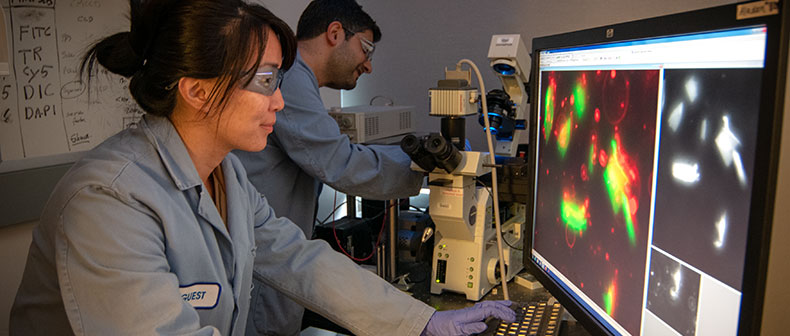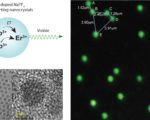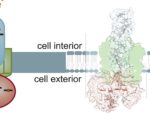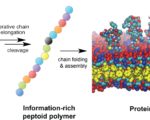
This facility studies the synthesis, analysis and mimicry of biological nanostructures. Expertise and capabilities are available to develop new materials based on the folding and assembly of sequence-defined, bioinspired polymers (including peptides, nucleic acids, and peptoids). New biocompatible imaging probes based on organic dyes and functionalized inorganic nanocrystals are being developed and are available to facilitate state-of-the-art bioimaging studies. Synthetic biology techniques are used to re-engineer organisms and create hybrid biomolecules to interface with devices. Additional capabilities include synthesis, purification and characterization of bio- and biomimetic polymers, bioconjugation, and combinatorial peptide and peptoid library synthesis and screening. Protein expression, microbial and eukaryotic cell culture, phage display, cellular engineering and biological microscopy, including total internal reflection, confocal and single molecule imaging are offered.
Highlighted Research Programs

Nanocrystals Engineered for Biological Imaging
Nanocrystals are being engineered with exceptional optical properties to better study the localization, associations, and chemistries of molecules within the complexity of functional cells. These nanocrystals are designed to resolve the behaviors of individual components of live cells, serving as sensors for increasingly challenging problems in neuroscience and cell biology.

Engineered NanoBioAssemblies: Interfacing Living and Non-living Systems
Biophysics and synthetic biology are used to engineer and explore the nanoscale interface between living microbes and inorganic materials, with an eye towards applications in carbon capture and sequestration and solar-to-fuels strategies. Advanced techniques have been developed to study the basic mechanisms underlying charge transfer and assembly of materials at the 5-nm thick cell membrane interface.

Bio-inspired Nanomaterials
The rules that govern the folding of biopolymers are being transferred to the world of non-natural materials by programming sequence information into polymer chains. Using robotic synthesis to create information-rich peptoid polymers that fold into precise three-dimensional nanoarchitectures, a new class of protein-mimetic materials have been created that combine the specificity and catalytic efficiency of proteins with the ruggedness of traditional polymers.

